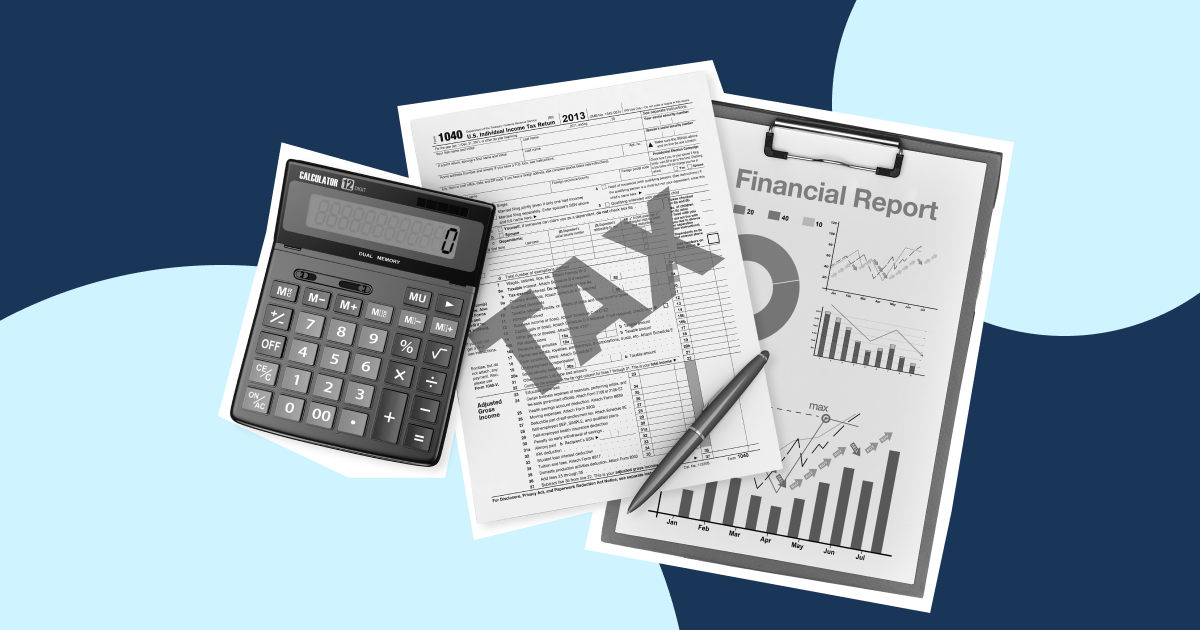Summary
Want to know how profitable and investment-worthy a company is? You’ll want to first calculate earnings and check its earnings per share (EPS). As its name suggests, EPS is an estimation of a company’s profits on a per-share basis. If you want to know more about this widely used financial metric, look no further. This article sums up the meaning of EPS, its importance and uses in business. It also covers the EPS formula, so you’ll know exactly how to calculate EPS.
What is EPS?
Earnings per share or EPS is a measurement of how much a company earns for each of its shares. To calculate EPS, you need to divide net income by total number of shares. The higher the EPS figure, the more profitable a business is said to be.

Earnings per share is reported for a specific period, such as a quarter or a fiscal year. Net income and total number of shares can be found in the income statement and balance sheet.
As a measure of corporate value, EPS has multiple uses:
- It is a reliable indicator of profitability. The higher a company’s earnings, the more money its shareholders stand to get.
- It helps determine a company’s stock value. A higher EPS pushes the stock value up because investors are willing to pay more if they believe a company is profitable.
- Analysts and investors use EPS numbers to compare companies and their performance, making this metric crucial to investment decisions.
- It forms the basis of another popular metric, the price-to-earnings (P/E) ratio, where E stands for EPS. (More on this later.)
How to calculate EPS
The EPS formula is:
EPS = (Net income - Preferred dividends) / End-of-period common shares outstanding
Here, net income is income available to shareholders after deducting expenses. Preferred dividends are cash dividends paid to a company’s preferred shareholders. Preferred dividends must be handed out before dividends on common shares are considered, which is why they are deducted in this calculation. Instead of end-of-period common shares outstanding, you may also use weighted average shares outstanding, as the number of common shares can change over the reporting period. This gives rise to a second EPS formula:
EPS = (Net income - Preferred dividends) / Weighted average common shares outstanding

Basic EPS vs diluted EPS vs adjusted EPS
There are further variations of the EPS formula. The formula above, for instance, calculates basic earnings per share. However, some companies with a more complex corporate structure might issue convertible securities (instruments such as stocks and bonds that can be changed into another). Common examples include convertible bonds and convertible preferred shares, which can be changed into common shares. If a company were to issue these convertible securities, it would take up the number of outstanding shares and lower its EPS. The company would then have to calculate diluted EPS, the formula for which is:
Diluted EPS = (Net income - Preferred dividends) / (Weighted average common shares outstanding + Conversion of dilutive securities)
Diluted EPS is considered more accurate than basic earnings per share because it accounts for any dilution in shareholders’ ownership percentage in a company. Yet another EPS formula variation is used to calculate adjusted earnings per share. Adjusted EPS is calculated when a company’s net income has a non-recurring component – such as a big gain from an asset sale or a heavy one-time expense. Companies disclose their EPS after adjusting such one-time gains and losses in their net income. The adjusted EPS formula is:
Adjusted EPS = (Net income - Preferred dividends +/- Extraordinary Items) / Weighted average common shares outstanding
Types of earnings per share
Depending on the period for which it is calculated, earnings per share can come under three different categories:
- Trailing EPS: It is calculated using data from the previous year. Because it is based on actual figures and not projections, it is the most accurate of the lot. However, some investors consider trailing EPS to be outdated and may prefer the other two categories.

- Current EPS: It utilises data from the current financial year, which might include actual figures as well as projections for the quarters that haven’t yet gone by.
- Forward EPS: It is calculated using projections solely, usually for the upcoming four quarters. Despite the dependence on estimates and not actual data, investors look for forward EPS as their investment decisions are grounded in future earning potential.
Besides these categories, there are five types of EPS calculations used in business. They are:
- Ongoing EPS: It is calculated using ordinary net income and excluding any income or expense that passes as a one-off. Its aim is to show earnings from a business’ core activities. Ongoing EPS is also called pro forma EPS, which signifies that some assumptions were made while computing it. Critics argue that ongoing EPS distorts a company’s actual earnings.
- Carrying value EPS: Also called book value EPS, this earnings per share variant measures the amount of company equity each share holds. It is used to reveal a company’s net asset value (assets minus liabilities) on a per-share basis.
- Retained EPS: Retained EPS is calculated by taking net income, adding any retained earnings a company currently holds, deducting dividends, and finally dividing the outcome by total shares outstanding. The resultant figure is the amount the company has decided to retain instead of passing on to shareholders. If the company reports a loss instead of retained earnings, it is called negative retained earnings and must be subtracted from net income.
- Cash EPS: Cash EPS is what you get when you divide operating cash flow (not net income) by diluted shares outstanding. Cash EPS is considered a purer figure because it involves real cash and is less easy to manipulate than net income. You’ll find operating cash flow on the first line of your cash flow statement.
- Reported EPS: Reported EPS is simply earnings per share obtained by using the Generally Accepted Accounting Principles (GAAP), a set of accounting rules that are mostly used in the United States. This figure must be reported in filings to the US Securities and Exchange Commission.
How to read an earnings report
You’ll find a company’s EPS in its quarterly and annual earnings reports. An earnings report is made up of the income statement, balance sheet, cash flow statement, and discussions covering the company’s earnings results, its overall finances, and market risks if any. The earnings report is usually accompanied by a press release encapsulating the relevant information in a reader-friendly manner.
The first part of the earnings report contains company details, such as its name, location, and tax identification number. The period for which the report is filed is also included, as is a table of contents with page numbers. The main financial section comes next and it includes key figures such as revenue, net income, and earnings per share, among others. You’ll find the basic earnings per share and diluted EPS figures in the income statement, which is also called the statement of profit and loss (as written in the sample below).

What is a good earnings per share?
There is no absolute value. The EPS fluctuates with changes in earnings and number of shares. One way to recognise what is a good earnings per share is to check its year-on-year performance. If EPS increases each year, it is a good sign, even if the growth is gradual. However, it’s important for the growth rate to go up as well.
You can also compare the EPS of competing companies in the same industry to get a fair idea of what counts as a good EPS.
Analysts assess a company’s EPS in context with its price-to-earnings ratio in order to see how share price changes relative to earnings. They then post their EPS estimates for the current and next financial years. Monitoring these earnings estimates can help you zero in on a good EPS for a particular company.
However, one must remember that companies can and do manipulate their EPS figures. For example, they can easily inflate their EPS by buying back stock and reducing the number of total shares outstanding. It’s important to consider these limitations while using EPS data to inform your investment decisions. Instead of using EPS as a standalone metric, analysing it alongside other metrics such as the price-to-earnings ratio and debt-to-equity ratio will help you gain a better understanding of a company’s profitability, market performance, and overall earning potential.
What does a lower than industry average EPS mean?
Investors often compare the EPS of two companies with similar business models within the same industry, or match up a company’s EPS with the industry average. When companies outperform their peers or beat the industry average, they are considered more profitable, thereby attracting more investors. But if a company’s EPS is lower than the industry average, it might turn off potential investors, even though EPS is not a definitive indicator of poor performance.
While using industry-wide EPS comparisons is obviously helpful, investors mustn’t forget to account for certain variables. For instance, they must know that the EPS of a new company will rarely match that of an established business, even if they are in the same sector. That’s because a new company will often have more expenses focused on growing its business.
Similarly, a company’s EPS might fall short of the industry average but still be reasonably good. A more thorough investigation into the reasons for the company’s off-form performance might reveal that it isn’t a bad investment choice after all.
What does a higher EPS than analyst estimates mean?
If a company’s EPS beats analyst estimates, it is called a positive or upside surprise. It means the company is poised for growth and is safe to invest in.
Analysts’ earnings estimates directly impact stock prices, especially in the short run. A positive surprise can drive prices up and a company that consistently beats analyst estimates tends to outperform its competitors.
To sum up, an EPS that beats analyst estimates is good news, even if the actual EPS figure isn’t that impressive on its own. In fact, you can expect a jump in your stock price even if your EPS is lower than in the last quarter, as long as it beats analysts’ forecasts.

Earnings per share vs dividend
Dividends are payments made to shareholders, either in the form of cash or additional shares. They are a way in which companies share their profit with shareholders. Not all companies pay dividends. Some retain all of their earnings to reinvest in the business. If companies do pay dividends, they declare the amount and the date by which it will be paid.
In contrast, earnings per share is simply an accounting figure and does not reflect payments made out to shareholders.
Earnings per share vs price-to-earnings (P/E) ratio
As previously mentioned, earnings per share is a core component of another key investment metric – the price-to-earnings (P/E) ratio, which compares stock price to EPS. The formula to calculate P/E ratio is:
P/E = Stock price per share / Earnings per share
In simple terms, it indicates the dollar amount one must invest in a business to receive $1 of its earnings.
The P/E ratio is used to see if a company’s stock is accurately valued. A high P/E ratio indicates a stock’s price is expensive relative to its earnings and vice-versa. If the P/E ratio is on the higher side, it could mean that the stock is overvalued or that investors are willing to pay more for it. Likewise, a low ratio could mean that a stock is undervalued. The P/E ratio, with the EPS as its core, is useful for determining a stock’s earning potential and its value over time.
Aspire helps you make better business decisions
Aspire Expense Management provides data-driven insights and analytics to help you grow your business the right way. Get a real-time overview of your finances to know exactly where you stand. You’ll also be privy to a future view of your cash flow, courtesy of an advanced invoice management tool with clear forecasted inflows.

_%20What%20It%20Means%20and%20How%20to%20Calculate%20It.webp)








%201.webp)


.webp)